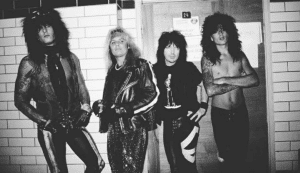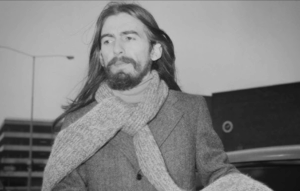A Profound Journey: George Harrison’s ‘Living in the Material World’ Explored 50 Years On
George Harrison swiftly transitioned from his highly successful rock debut to a significant humanitarian effort aimed at providing aid to Bangladesh, a country devastated by genocide. It took him two years before he returned to the recording studio to work on his Living in the Material World album.
In the period leading up to it, he faced significant challenges in his belief in humanity, as he encountered numerous hurdles while attempting to secure crucial financial aid for those in desperate situations.
Dedicated Sessions and a Fitting Inclusion
Harrison experienced difficulties maintaining a consistent moral path, oscillating between intense dedication that earned him the moniker “His Lectureship” and engaging in the excessive indulgence often associated with rock stars during the 1970s.
Everything was dedicated to the new sessions, featuring songs composed between 1971 and 1972, except “Try Some, Buy Some,” a song written by Harrison for Ronnie Spector during the All Things Must Pass period, which was fittingly included.
Additionally, Harrison tried to reduce some of the extravagant elements associated with producer Phil Spector, opting for a smaller, more consistent group of musicians that included Gary Wright, Nicky Hopkins, Klaus Voormann, and Jim Keltner.
Ringo Starr and Zakir Hussain, an Indian classical musician, and John Barham, an arranger, provided important guest contributions. In an interview with Uncut, Keltner expressed that after the Beatles, it seemed like Harrison was building a community of talented artists and musicians who shared a similar soulful mindset.
The highly successful and chart-topping song “Give Me Love” from the album exemplified a restrained expression of devotion. In his 1980 memoir, titled I Me Mine, Harrison characterized it as a humble communication, referring to it as a “a prayer and personal statement between me, the Lord and whoever likes it.”
All Things Must Pass and Beyond
Living in the Material World made a strong comeback on the Billboard chart, but it couldn’t replicate the exhilarating impact of All Things Must Pass. This was actually Harrison’s intention, as evidenced by the playful working title of the follow-up album, The Magic Is Here Again.
All Things Must Pass carried a lively and joyful energy, while Living in the Material World embraced a contemplative and introspective tone, often pondering deep questions.
“Some of my solo records didn’t do so well, which was okay,” Harrison eventually confessed. His previous colleague in the band “Paul [McCartney] feels more like he has to be a success all the time – but, for me, I had such ego satisfaction through the Beatles period. We had more fame than anybody could imagine, so when some of my solo records didn’t sell, it didn’t really matter to me. … I say, if you set yourself up looking for success, when you have a failure, you fall much deeper.”
The main song, “Who Can See It,” along with “Sue Me, Sue You Blues,” reflects Harrison’s nostalgic reflection on his Beatles era. However, most of the time, Harrison turns his gaze inward, contemplating his fame and faith.
He wanted to be more conscious and focused, as indicated in the song “Be Here Now,” yet Harrison is frequently lost and distant (“Don’t Let Me Wait Too Long”). The album’s artwork, featuring Hindu symbolism and a picture of Harrison holding American money, further emphasizes these conflicting themes.
Barham said in While My Guitar Gently Weeps: The Music of George Harrison:
“George was under stress during Living in the Material World.
“I felt that he was going through some kind of a crisis. I think it may have been spiritual, but I cannot be sure. I felt an austere quality was entering his songs.”
In an attempt to counteract the feeling of boredom, Harrison made extra efforts in his relief work. He generously gave away the copyrights of nine out of the eleven songs on the main album, along with the non-album B-side “Miss O’Dell,” to his charitable foundation called Material World Charitable Foundation.
Rise and Fall
Meanwhile, when Living in the Material World was published on May 30, 1973, it quickly soared to the top of the charts in the United States and reached second in the United Kingdom. However, its popularity declined rapidly, with only sales that earned a gold certification.
Perhaps that’s why this personal and artistic moment didn’t last. “There’s a sound on Living in the Material World that Harrison could have pursued and developed – and it didn’t quite happen,” Keltner acknowledged.
To bounce back, Harrison tried to move towards bigger, more polished projects and teamed up with a variety of different artists. However, it took him a long time to achieve the same level of popular success with his music, reaching platinum sales again.



















